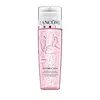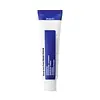What's inside
What's inside
 Key Ingredients
Key Ingredients

No key ingredients
 Benefits
Benefits

 Concerns
Concerns

 Ingredients Side-by-side
Ingredients Side-by-side

Water
Skin ConditioningPropylene Glycol
HumectantGlycerin
HumectantAlcohol Denat.
AntimicrobialButylene Glycol
HumectantPEG-20
HumectantPEG-8
HumectantBis-PEG-18 Methyl Ether Dimethyl Silane
EmollientPhenoxyethanol
PreservativePEG-60 Hydrogenated Castor Oil
EmulsifyingEthylhexylglycerin
Skin ConditioningCarbomer
Emulsion StabilisingPotassium Hydroxide
BufferingOphiopogon Japonicus Root Extract
Skin ConditioningRosa Gallica Flower Extract
AstringentJasminum Officinale Extract
MaskingPaeonia Suffruticosa Extract
Skin ConditioningTheobroma Cacao Extract
Skin ConditioningMoringa Oleifera Seed Extract
Skin ConditioningAlteromonas Ferment Extract
Skin ConditioningParfum
MaskingWater, Propylene Glycol, Glycerin, Alcohol Denat., Butylene Glycol, PEG-20, PEG-8, Bis-PEG-18 Methyl Ether Dimethyl Silane, Phenoxyethanol, PEG-60 Hydrogenated Castor Oil, Ethylhexylglycerin, Carbomer, Potassium Hydroxide, Ophiopogon Japonicus Root Extract, Rosa Gallica Flower Extract, Jasminum Officinale Extract, Paeonia Suffruticosa Extract, Theobroma Cacao Extract, Moringa Oleifera Seed Extract, Alteromonas Ferment Extract, Parfum
Sea Water
HumectantDipropylene Glycol
HumectantGlycerin
HumectantWater
Skin ConditioningCaprylic/Capric Triglyceride
MaskingNiacinamide
SmoothingPhenyl Trimethicone
Skin ConditioningCetyl Ethylhexanoate
EmollientCetearyl Alcohol
Emollient1,2-Hexanediol
Skin ConditioningSodium Acrylate/Sodium Acryloyldimethyl Taurate Copolymer
Emulsion StabilisingButylene Glycol
HumectantSodium Hyaluronate
HumectantPanthenol
Skin ConditioningEcklonia Cava Extract
Skin ConditioningLaminaria Japonica Extract
Skin ProtectingCaulerpa Lentillifera Extract
Salicornia Herbacea Extract
Skin ConditioningAllantoin
Skin ConditioningMacadamia Ternifolia Seed Oil
EmollientAdenosine
Skin ConditioningSorbitan Stearate
EmulsifyingSorbitan Oleate
EmulsifyingIsohexadecane
EmollientPolysorbate 80
EmulsifyingGlyceryl Stearate Se
EmulsifyingCarbomer
Emulsion StabilisingArginine
MaskingCaprylyl Glycol
EmollientEthylhexylglycerin
Skin ConditioningDisodium EDTA
Sea Water, Dipropylene Glycol, Glycerin, Water, Caprylic/Capric Triglyceride, Niacinamide, Phenyl Trimethicone, Cetyl Ethylhexanoate, Cetearyl Alcohol, 1,2-Hexanediol, Sodium Acrylate/Sodium Acryloyldimethyl Taurate Copolymer, Butylene Glycol, Sodium Hyaluronate, Panthenol, Ecklonia Cava Extract, Laminaria Japonica Extract, Caulerpa Lentillifera Extract, Salicornia Herbacea Extract, Allantoin, Macadamia Ternifolia Seed Oil, Adenosine, Sorbitan Stearate, Sorbitan Oleate, Isohexadecane, Polysorbate 80, Glyceryl Stearate Se, Carbomer, Arginine, Caprylyl Glycol, Ethylhexylglycerin, Disodium EDTA
 Reviews
Reviews

Ingredients Explained
These ingredients are found in both products.
Ingredients higher up in an ingredient list are typically present in a larger amount.
Butylene Glycol (or BG) is used within cosmetic products for a few different reasons:
Overall, Butylene Glycol is a safe and well-rounded ingredient that works well with other ingredients.
Though this ingredient works well with most skin types, some people with sensitive skin may experience a reaction such as allergic rashes, closed comedones, or itchiness.
Learn more about Butylene GlycolCarbomer is a polymer of acrylic acid. Its main role is to create a gel consistency.
A high amount of carbomer can cause pilling or balling up of products. Don't worry, most products contain 1% or less of carbomer.
Ethylhexylglycerin (we can't pronounce this either) is commonly used as a preservative and skin softener. It is derived from glyceryl.
You might see Ethylhexylglycerin often paired with other preservatives such as phenoxyethanol. Ethylhexylglycerin has been found to increase the effectiveness of these other preservatives.
Glycerin is already naturally found in your skin. It helps moisturize and protect your skin.
A study from 2016 found glycerin to be more effective as a humectant than AHAs and hyaluronic acid.
As a humectant, it helps the skin stay hydrated by pulling moisture to your skin. The low molecular weight of glycerin allows it to pull moisture into the deeper layers of your skin.
Hydrated skin improves your skin barrier; Your skin barrier helps protect against irritants and bacteria.
Glycerin has also been found to have antimicrobial and antiviral properties. Due to these properties, glycerin is often used in wound and burn treatments.
In cosmetics, glycerin is usually derived from plants such as soybean or palm. However, it can also be sourced from animals, such as tallow or animal fat.
This ingredient is organic, colorless, odorless, and non-toxic.
Glycerin is the name for this ingredient in American English. British English uses Glycerol/Glycerine.
Learn more about GlycerinWater. It's the most common cosmetic ingredient of all. You'll usually see it at the top of ingredient lists, meaning that it makes up the largest part of the product.
So why is it so popular? Water most often acts as a solvent - this means that it helps dissolve other ingredients into the formulation.
You'll also recognize water as that liquid we all need to stay alive. If you see this, drink a glass of water. Stay hydrated!
Learn more about Water